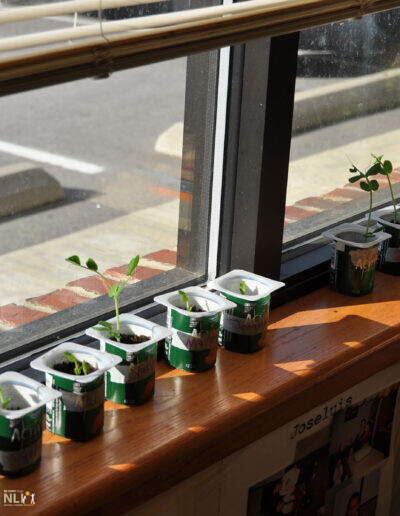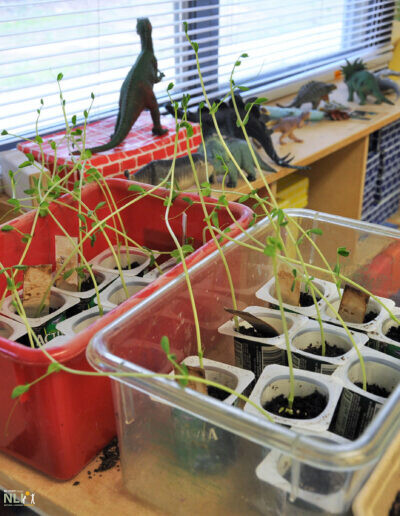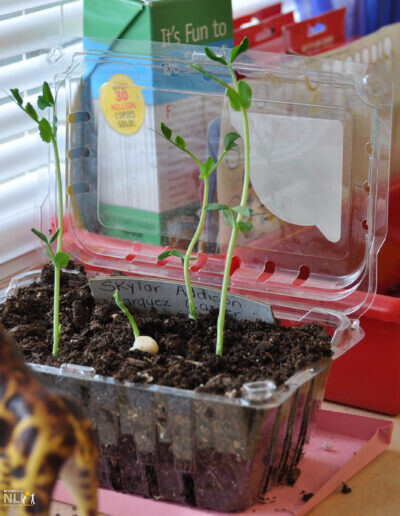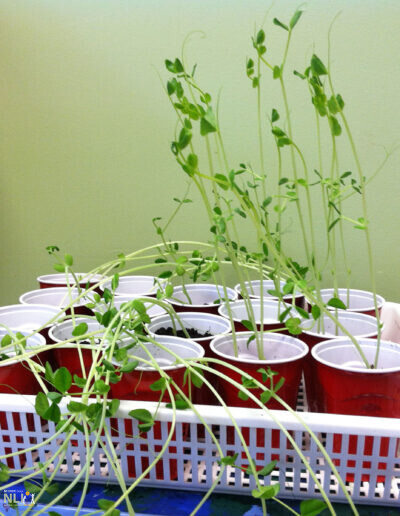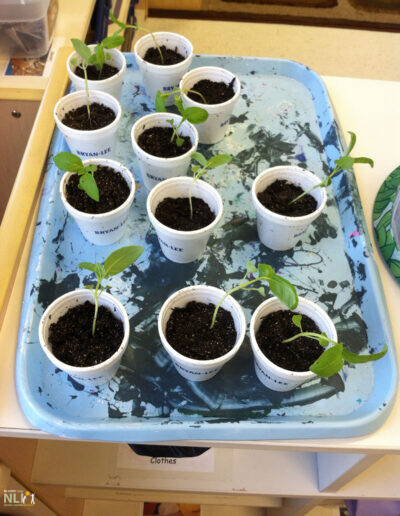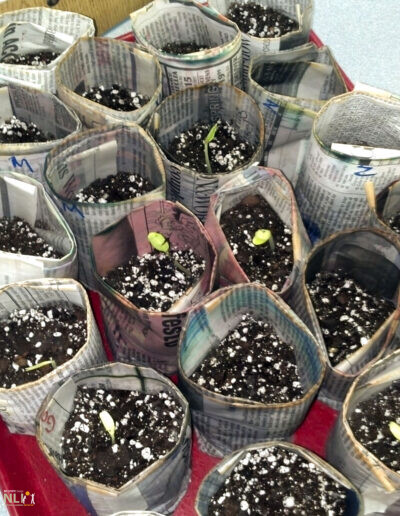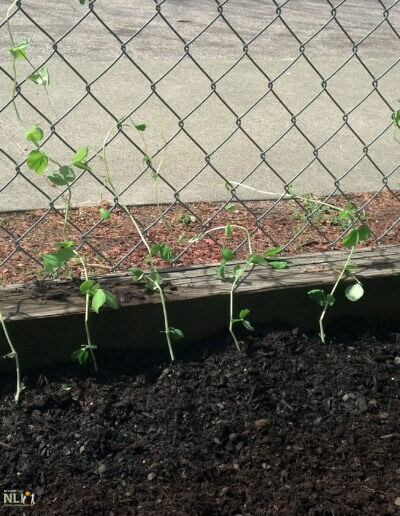Infosheets
19. Starting Veggies Indoors
Spring is coming! It’s time to start seeds indoors to prep for the growing season– and bring gardening fun to school, home, or a childcare center! If you live in a cooler climate, starting veggie seeds indoors will protect delicate seedlings from early spring frosts. In a warmer climate, starting indoors will lengthen the growing season. In either case, starting indoors will support a full and flourishing vegetable garden throughout the summer. Carefully examine seed packets for specific planting instructions to ensure that your seedlings thrive.
CONTAINERS
When starting veggie seeds indoors, get creative with containers by using everyday objects that can be found at home. Newspaper pots are a simple way to sprout seedlings (see InfoSheet: Making Newspaper Seedling Pots). Milk and egg cartons, muffin tins, yogurt cups, and many other household items can be repurposed as seed starter pots. Whatever the container, make sure to poke a hole in the bottom for adequate drainage.
WHEN TO START SEEDS INDOORS
The best time to start seeds indoors is based on the last spring frost date for the area. Frost dates are available from various online sources by entering the zip code. Below is an overview of approximate start times for popular seeds.
Cool Season Vegetables
- Kale: Start seeds indoors 8 to 10 weeks before last frost. Transplant seedlings outside 4 weeks before last frost date.
- Lettuce: Start seeds indoors 4 to 5 weeks before the last frost. Transplant seedlings outside right around the last frost.
- Spinach: Start seeds indoors 7 to 9 weeks before last frost. Transplant seedlings outside 3 weeks before last frost date.
Warm Season Vegetables
- Cucumber: Start seeds indoors 2 to 3 weeks before the last frost. Transplant seedlings outside 1 to 2 weeks after the last frost date.
- Bell Pepper: Start seeds 8 weeks before the last frost. Transplant seedlings outside 2 weeks after the last frost date. Pepper seeds require warmer soil temperatures to germinate, so keep them in a warm area for best results.
- Squash and Zucchini: Start seeds 1 to 2 weeks before the last frost. Transplant seedlings outside 2 weeks after the last frost date.
- Tomato: Start seeds 6 weeks before the last frost. Transplant to a larger container when seedlings have at least 2 sets of leaves. Use a container twice as large as the original, leaving 1 inch of space between stem and container edge. Transplant seedlings outside 1 to 2 weeks after the last frost date. Tomato seeds require warmer soil temperatures to germinate, so keep them in a warm area for best results.
PLANTING SEEDS
- Fill clean containers with 3-4 inches of potting mix or as deep as possible if container is more shallow. Moisten thoroughly with warm water.
- Plant your seeds according to the depth and spacing listed on the seed packet.
- Tiny seeds like lettuce should be sprinkled a few at a time across the surface then covered lightly with potting mix.
- Once seeds are planted, keep the planting mix moist.
- Find a warm area such as sunny window or refrigerator top. Keep there until seedlings emerge.
SEEDLINGS EMERGE
- Once seedlings emerge, 12 to 16 hours of light are required– from the sun, grow lamps or fluorescent lights.
- As seeds sprout, they may need to be thinned to ensure enough space to grow. Check minimum spacing on seed packets and thin seedlings accordingly.
HARDENING OFF AND PLANTING SEEDLINGS
Before planting seedlings outside, they need to gradually adjust to outdoor climates or “harden off,” beginning one week before transplanting, thereby preventing plants from going into shock. To harden off, place seedlings outdoors for a few hours in part-shade, gradually extending the time each day, making sure to keep container soil moist. At the end of the week, plant seedlings in the ground. Alternatively, depending on the plant, re-pot in a larger temporary or permanent container (see InfoSheet: Growing Edibles in Containers). Now watch the plants thrive. Enjoy the fresh, edible produce!

